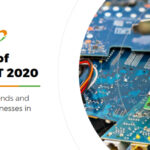We often hear it’s cheaper to sweat IT assets until they reach end of life. Now before we dive in, by IT assets, we are specifically referring to laptops, desktops, smartphones and tablets. These are the tools that your employees rely on to do their jobs. No doubt you want to equip your employees with reliable equipment, rather than devices that damage and disrupt their work. Pretty important then!
And it raises the question: is sweating the asset the best approach? Based on the experience of over 4000 customers, we have concluded that the optimum period to keep desktops and laptops is 3-4 years, for smartphones it’s nearer 2 years! Any longer and their performance starts deteriorating (see video from one of our customers below)
The video clearly illustrates the issues associated with ‘sweating’ assets. If you only look at the surface and what you spend, as G4S did, you don’t fully recognise and acknowledge total cost of ownership.
So, surely it’s better to find the optimum lifetime for your assets and consider how you can build a life cycle plan for those assets? There is a reason manufacturers only provide a 2 or 3 year warranty. They don’t want to take the risk after this period. It’s not worth it!
Hopefully you can see that the status quo of sweating assets, isn’t the cheap option it appears to be. There are costs, which are either hidden or not truly acknowledged.
1. Maintenance costs – How many tickets are raised by users, which your IT team have to deal with? The operational costs and strain on your IT department will grow as your assets age. This also distracts your IT department from focusing on value add initiatives.
2. Productivity costs – we have all experienced the frustrations when your laptop takes forever to turn on, or is operating slowly, or worst of all it crashes. You lose your work and get disrupted when you’re in the zone. This has a real and significant impact on productivity of your employees.
3. Replacement costs – Well to begin with there are the costs of getting rid of old IT assets, complicated by a miscellany of replacement parts, and… You get the picture. The costs can escalate.
4. Opportunity costs – new equipment works better; Batteries last longer; wi-fi connects more reliably; performance is better. Your employees will work better if you give them better tools.
So don’t just follow the ‘sweating assets is cheaper’ philosophy, just because you have always done it that way. Consider a different approach, a better approach.
By using technology that fuels data about your IT estate, you can manage your assets in a more sustainable way that reduces total cost of ownership and provides your employees with the best performing tools for the job. You can also begin to formalise an idea about when your assets need to be replaced, before they become a drag on your IT department. And if you wrap this around finance that’s designed to allow you to be agile, you can replace your assets more efficiently.
And a final point: you can begin to reverse the old model of users raising tickets when their device fails. By empowering your IT team with information about each device and how it’s performing (start-up time, number of crashes, and number of application failures, etc.) your IT team can be proactive. They can tell the user there’s a potential problem with their device and fix it before it becomes a real issue. Everyone knows prevention is better than cure.
Sweating assets is a reactive strategy and it relies on ‘hope’ that the devices will continue to work well. That would be ‘utopia’… the reality is you need to proactively manage the life cycle of your IT devices and that’s where we can support you at 3 Step IT.
Want to learn more? Get in touch today.



